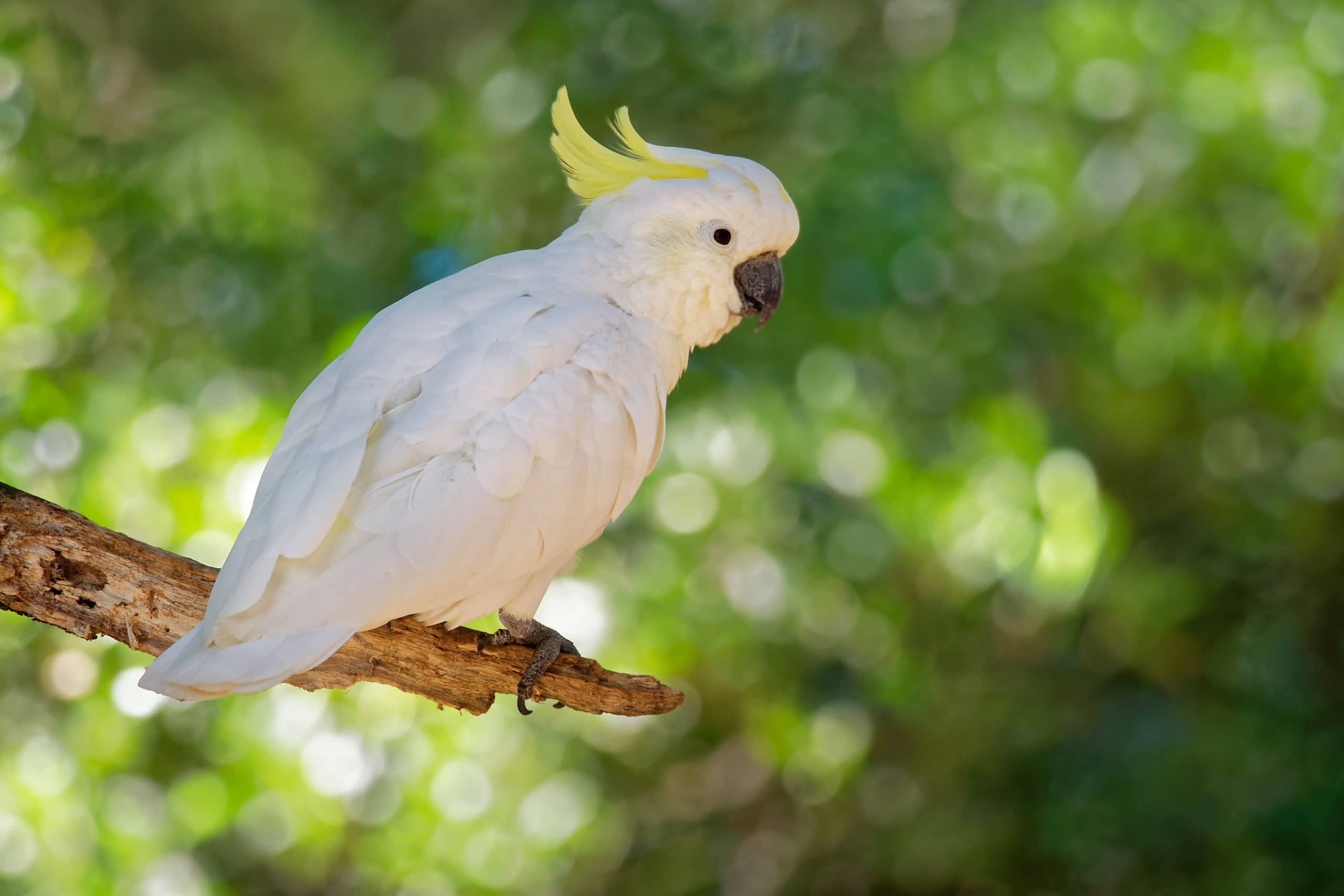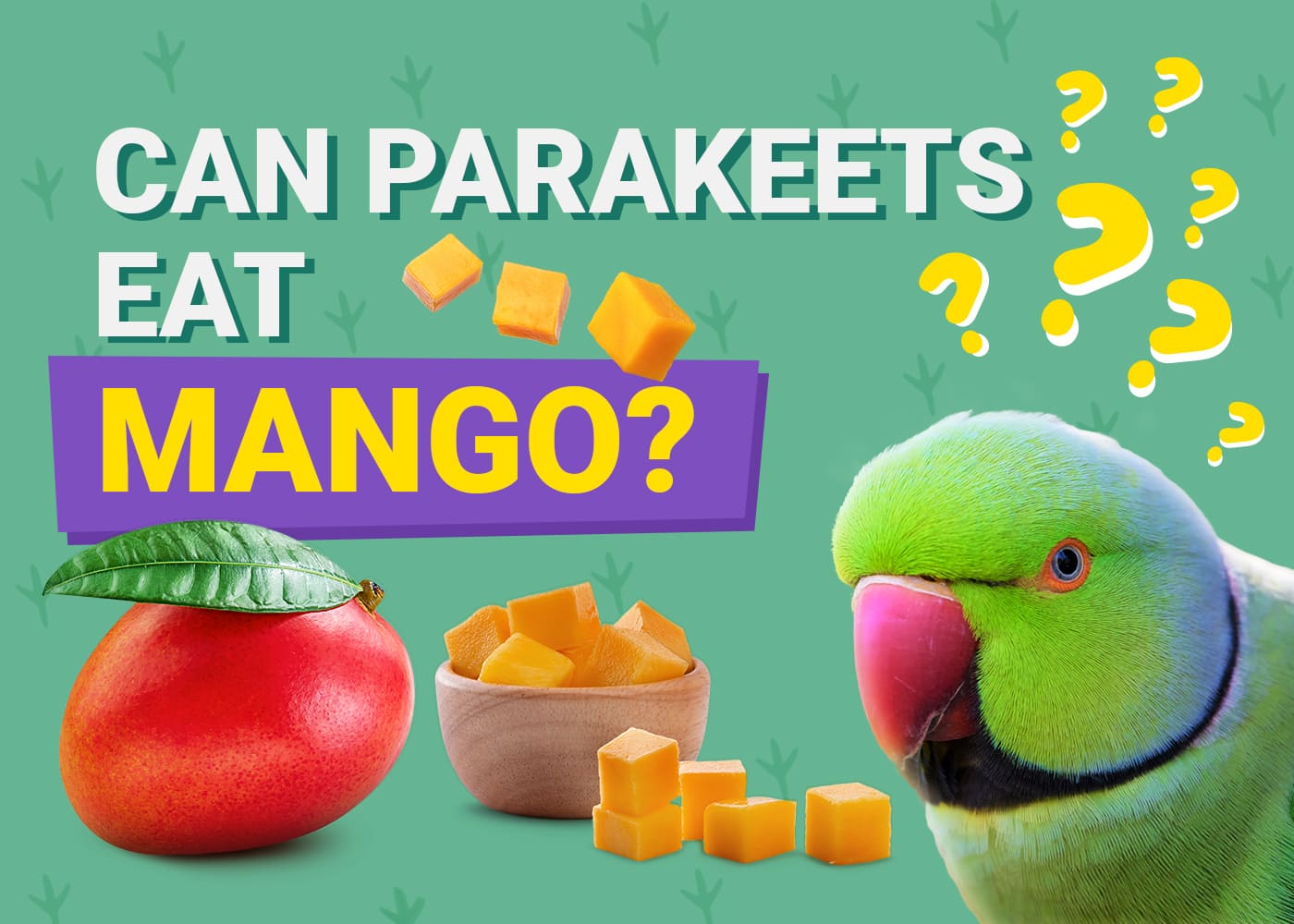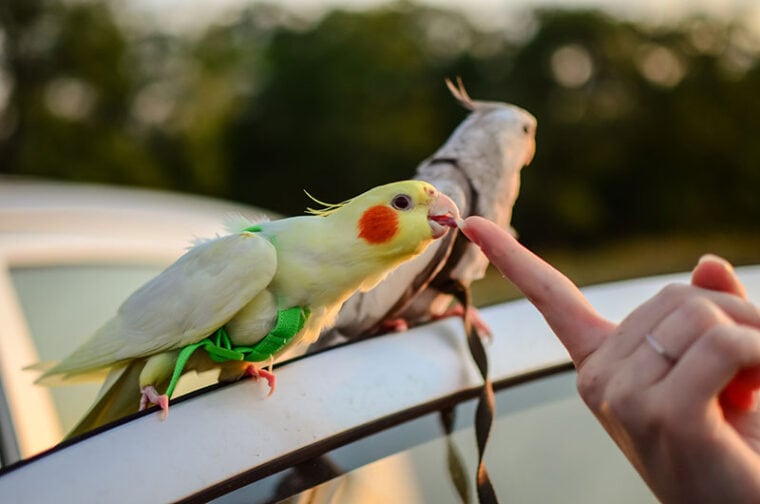
Cockatiels are very popular pet birds. They can live up to 20 years, are inexpensive when compared to some of the larger Parrot species, and typically enjoy being handled. However, to ensure that a Cockatiel does enjoy being handled and petted, owners are advised to start handling them from a young age, maintain regular handling every day, and handle them carefully. Birds have fragile chests and gripping one too tight can lead to respiratory problems.
One way to help ensure that a pet Cockatiel continues to tolerate handling is to ensure that you pet them in areas they enjoy. And while every bird is unique and has its own preferences when it comes to where they want to be petted, there are some spots where most Cockatiels are more likely to enjoy being stroked.
Where To Pet a Cockatiel
Although every bird is different, there are some spots where most Cockatiels do enjoy being petted.

Under Its Beak
Try gently stroking your Cockatiel under the beak, just on the chin. While there isn’t a lot of space to stroke, your Cockatiel might like a gentle scratch in this area. If it is enjoying the experience, your bird will likely lift its head to provide you with easier access.
On Its Head
Cockatiels also enjoy having the top of their head scratched. Some Cockatiels enjoy this kind of attention so much that they will approach their humans and lower their heads to indicate that they want to be stroked.
At the Base of the Neck
Although you should avoid stroking your Cockatiel’s back, some do enjoy having the nape or the base of their neck stroked. Unlike other pets, birds generally prefer to be stroked against the grain. This means stroking towards the head, and not towards the tail.
Over Its Ears
Using the thumb and forefinger, try gently rubbing above the bird’s ears. When stroking any part of a Cockatiel look for signs to determine whether they are enjoying it or not. If the bird backs away, it is a good sign they don’t like the experience. If they start to close their eyes and move into the stroking or present the part you’re stroking, this is usually a sign that they are enjoying it.
The Feet
Not all Cockatiels like this, and they need to trust you before most will allow it, but some Cockatiels like a gentle foot massage. Stroke the top of the feet and see how your bird reacts.

Where Not to Pet a Cockatiel
As well as knowing where to pet, there are certain areas that you should avoid because most birds dislike attention in these spots.
Down Its Back
While your Cockatiel might like being stroked at the base of the neck, you should avoid going any further down the back and keep attention above this area where possible.
The Tail
The tail is another spot that you should avoid stroking, even if your Cockatiel fans its feathers to show it is happy.
Under The Wings
One of the reasons that you should not pet birds on the back or under the wings is because it can stimulate the sexual organs, leading to behavioral problems between you and your bird. Also, a bird’s wings are delicate which means that the bird is reluctant to have people and other animals touch them.
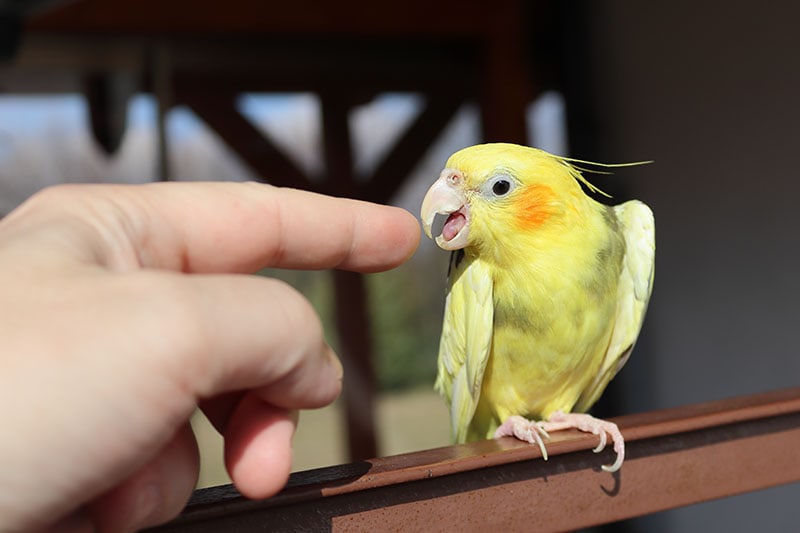
The 6 Cockatiel Petting Tips
The more you handle your Cockatiel, the more likely it is to enjoy the experience and want more. Start when they are young birds, handle them daily, and follow these tips to help ensure that the experience is a positive one for both of you.
1. Be Calm
Birds are receptive to our emotions, so if you are fraught and anxious when you approach your Cockatiel, it will pick up on this and mirror your emotions. Be calm, even if it is your first time petting a bird.
2. Ensure the Cockatiel Is Calm
Similarly, you should try to approach the bird when it is calm and relaxed. If the bird is wound up or looks defensive, leave it for a few minutes and come back when things are calmer.
3. Don’t Surprise It
Making your Cockatiel jump will put the bird on edge so talk or make noise when you approach, especially if you are approaching the bird from behind or from another room. This will help ensure the bird is calm and it will prevent anxiety.
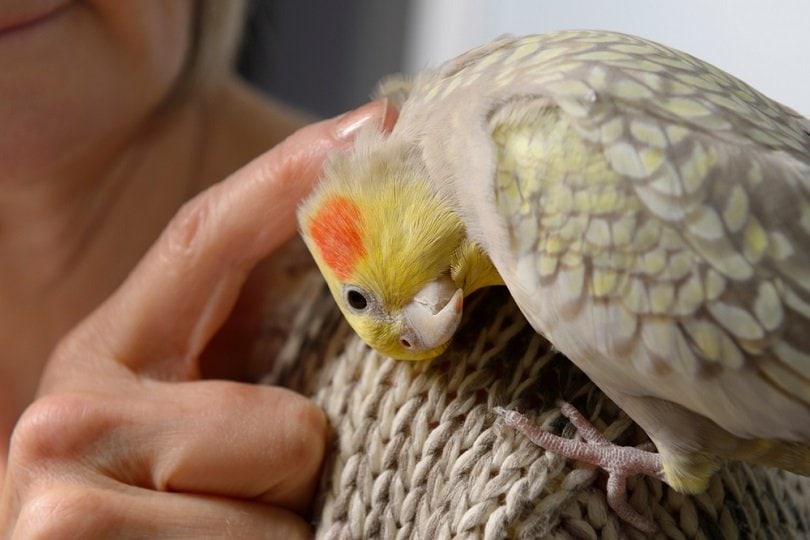
4. Don’t Be Too Rough
Cockatiels are small, much smaller than us. This means that it is very easy to cause accidental injury—so be gentle, approach calmly, and don’t get too carried away scratching your Cockatiel even if it does seem to be enjoying it.
5. Don’t Push It
If you try stroking a different area of a Cockatiel and it backs away, don’t push the issue. Try stroking another area or walk away and come back in a few minutes to try and garner a positive response.
6. Stroke Against the Feathers
If you’ve ever owned cats, dogs, or other animals, you will be used to stroking with the direction of the fur, which generally means stroking down the animal and towards the tail. With most birds, you should stroke and pet in the opposite direction so stroke towards the head. It can take some getting used to, but this is how most Cockatiels prefer to be petted.
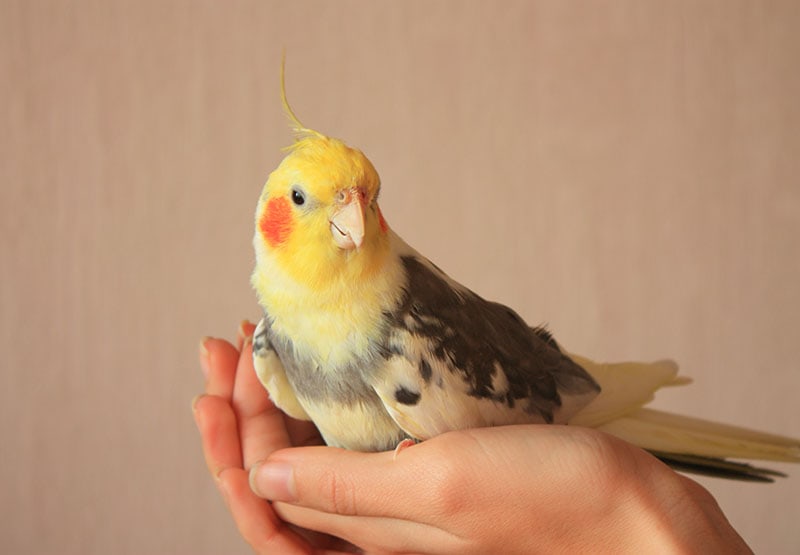
Conclusion
Cockatiels can make excellent pets that will get along with family, provide entertainment, and can enjoy handling, as long as you approach petting correctly. Be calm, avoid sensitive areas such as on the back and under the wings, and be receptive to your Cockatiel’s reactions. If it isn’t enjoying what you’re doing, try petting somewhere else or leave the bird alone until it is in a calmer state of mind.
Featured Image Credit: Daria_vg, Shutterstock



